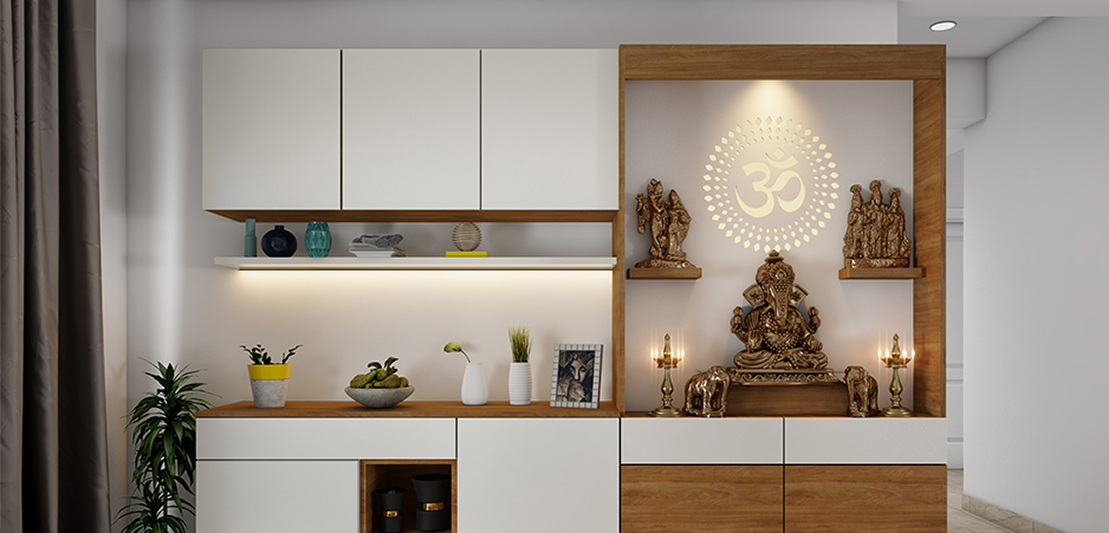
How to Choose the Right Mandir Direction in Home as per Vastu
Vastu Shastra is an ancient Indian science of architecture and design that aims to create harmonious and positive spaces for living and working. One of the most important aspects of Vastu Shastra is the placement of the mandir or the temple at home. The mandir is a sacred space where one worships the deities and seeks their blessings. It is also a source of peace, joy, and spiritual energy for the entire family.
But how do you choose the right mandir direction in home as per vastu? What are the dos and don’ts of placing the mandir in your home? In this blog post, we will answer these questions and provide some practical tips to help you create a perfect pooja room in your home.
The Best Mandir Direction in Home as per Vastu
According to Vastu Shastra, the best direction for placing the mandir or temple at home is the northeast direction or Ishan kona. This direction is associated with Lord Ishana, a Hindu deity, and is considered the direction of knowledge and wisdom. Placing the mandir in this direction brings good health, prosperity, and positivity to the home.
If the northeast direction is not available or suitable, you can also place the mandir in the north or the east direction. These directions are also auspicious and favorable for worship. The north direction is ruled by Lord Kubera, the god of wealth and success, while the east direction is ruled by Lord Indra, the king of gods and the lord of rain.
You should avoid placing the mandir in the south direction, as it is considered inauspicious and leads to loss of wealth and happiness. You should also avoid placing the mandir under a staircase, near a washroom, or in a bedroom, as these locations are disrespectful and impure.
The Best Mandir Position and Orientation as per Vastu
After choosing the right mandir direction in home as per vastu, you should also pay attention to the position and orientation of the mandir and the idols in it. Here are some guidelines to follow:
-The mandir should be placed in a clean, well-lit, and ventilated area. It should not be cluttered or crowded with unnecessary items.
The mandir should be elevated from the ground level, preferably on a platform or a pedestal. -The height of the mandir should be at least six inches from the floor.
The idols should be placed in the center of the mandir, facing the east or the north direction. They should not face the south direction, as it is considered disrespectful and unlucky.
The idols should not be placed in front of each other, as it creates a conflict of energies. They should also not be placed too close to the wall, as it blocks the flow of positive energy. There should be a gap of at least six inches between the idols and the wall.
The idols should not be too big or too small for the mandir. They should be proportionate to the size of the mandir and the room. The ideal height of the idols should be between two and nine inches.
The idols should be clean and well-maintained. They should not be broken, chipped, or faded. They should also not be made of metal, as it attracts negative energy.
The Best Mandir Design and Décor as per Vastu
The design and décor of the mandir also play a role in enhancing the beauty and sanctity of the pooja room. Here are some tips to follow:
The mandir should have a simple and elegant design, without any sharp edges or corners. It should also have a dome or a pyramid-shaped roof, as it symbolizes the cosmic energy and the connection with the divine.
The mandir should have a door or a curtain to cover it when not in use. The door or the curtain should open in the north or the east direction, as it invites positive energy and prosperity.
The mandir should have a window or a ventilator to allow natural light and air to enter. The window or the ventilator should also face the north or the east direction, as it brings freshness and clarity.
The mandir should have a lamp or a diya to illuminate the idols and create a warm and soothing ambiance. The lamp or the diya should be placed in the southeast corner of the mandir, as it represents the fire element and the energy of Lord Agni, the god of fire.
The mandir should have a bell or a conch to create a pleasant and auspicious sound. The bell or the conch should be hung in the north or the east direction, as it wards off evil and negativity.
The mandir should have a kalash or a pot filled with water and topped with a coconut and mango leaves. The kalash represents the water element and the abundance of life. It should be placed in the northeast corner of the mandir, as it attracts blessings and prosperity.
The mandir should have a rangoli or a colorful pattern made of rice flour, flowers, or sand. The rangoli represents the earth element and the beauty of nature. It should be drawn in front of the mandir, as it welcomes the deities and the guests.
The Best MandirColors and Materials as per Vastu
The colors and materials of the mandir also influence the mood and the energy of the pooja room. Here are some suggestions to follow:
The mandir should have light and soothing colors, such as white, yellow, cream, or light blue. These colors reflect the purity, peace, and happiness of the pooja room. They also create a contrast with the bright colors of the idols and the flowers.
The mandir should avoid dark and dull colors, such as black, brown, gray, or red. These colors create a negative and depressing atmosphere in the pooja room. They also clash with the vibrancy and the positivity of the pooja room.
The mandir should be made of natural and eco-friendly materials, such as wood, marble, or stone. These materials are durable, elegant, and auspicious. They also resonate with the natural elements and the cosmic energy.
The mandir should avoid synthetic and artificial materials, such as plastic, metal, or glass. These materials are cheap, tacky, and inauspicious. They also interfere with the natural elements and the cosmic energy.



Recent comments(0)